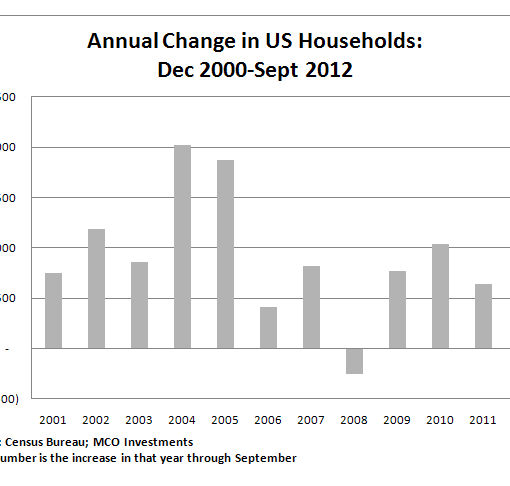The way investors think about stocks has changed over time. Prior to the 1920s, stocks were considered especially risky. There was a clear distinction between investment grade and speculative stocks. Investment grade companies paid dividends through thick and thin and were backed by real assets.
Investors typically demanded yields of 4-5% and more. That meant P/E ratios remained low except for the occasional speculative rally. Book value was the anchor investors relied upon. If a stock did not produce income, and if the share price was considerably higher than the value of underlying assets, it was speculative.
Then in 1924 Edgar Smith published a study, Common Stocks as Long Term Investments. That seminal work showed how stocks had consistently outperformed bonds, since at least the Civil War, due to rising earnings and dividend growth.
Its publication changed investing in two ways: stocks were now considered much less risky and investors became obsessed with growth. The metrics investors relied upon to make decisions transitioned from what we now call a value approach to growth stock investing. Clearly there is nothing wrong with expecting a business to grow. The problem was that in the new mind-set of the 1920s growth trumped everything else and investors ignored the price they paid for perceived growth, not unlike the late 1990s.
During both eras perceived growth stocks were routinely selling for 45-50 times earnings, while companies that were not regarded as growth stocks were selling with P/E ratios of roughly 10 times. Another way of looking at this: growth stocks with earnings yields of 2-3% were favored over the others, many of which had earnings yields of 8-10%.
We know things did not turn out well for most investors who participated in the 1920s mania or the late 1990s tech bubble. By 1932, when stocks were down by some 85% and the dividend yield on the stock market was in the double-digits, the entrenched view was that stock ownership should be avoided.
One may be surprised to know that by the mid-thirties there was a rebirth of confidence in the merits of owning “good stocks.” From the depths of depression the stock market had more than tripled by 1937 and, according to Benjamin Graham, investors now looked to combine both the old-time approach with the growth mind-set in valuing stocks. This rebirth in optimism was short-lived, unfortunately, and a new bear market would take stock prices lower by some 45% within 14-months of the ’37 highs.
To review the history of prevailing investment theory and stock valuations since 1871, when good record keeping began, can be instructive. Ways investors think about stocks tend to evolve along with changes in their price levels.
A recent example is investors who in 2009 thought stocks were too expensive at 10 times earnings, but now are quite comfortable paying 18 times for them. It’s as if, when stocks are cheap, they become too expensive for most people.
The starting point for investments, the price you pay for an asset, determines future rates-of-return. In other words, where you end up as an investor depends mightily on where you start. To understand where we are starting from today and how we think about stocks, let’s look no further than CAPE, the cyclically adjusted price earnings ratio. Devised by Robert Shiller and not immune to criticism, CAPE measures average corporate earnings over ten years.
There’s an old adage that it’s better to be approximately right than precisely wrong. CAPE has a marvelous track record of predicting the approximate long term future returns from stocks, although it is useless as a short-term tool.
By creating an “earnings yield,” or inverse of a price-to-earnings ratio, from many starting points using CAPE, we have compared that yield to the subsequent actual 10-year total return for stocks. For example, in the year 2000, CAPE correctly indicated that stocks were priced to return a paltry 2.5%. Now it is signaling American stocks are priced to generate long term returns of slightly above 4%.
We make a distinction between speculating and investing. Predicting the market’s sentiment is speculating and forecasting future cash flows from an asset is investing, to paraphrase Keynes. Our speculation is that the stock market’s ebullient mood is bound to change in the coming months. Markets have already anticipated a lot of good possible outcomes and it would not be unusual for the markets to take a step back at some point, given the rise in U.S. equities in the past 20 months.
We remain defensive because where you end up as an investor depends mightily on where you start and a 4% CAPE yield for U.S. stocks is not particularly compelling. Fortunately, there are attractive CAPE yields in other parts of the developed world, particularly in Europe. As an example, in France the CAPE yield is 9%. Noteworthy too is Singapore’s CAPE yield of 8%.
Using the pre-1920s mind-set, our focus in the investment process is to own companies for their attractive dividend yields and underlying assets. We are finding stocks outside the U.S. selling at low earnings multiples and pay dividends of 4% or 5% or more. By comparison, all U.S. stocks that have earnings and pay a dividend have a median P/E of 18 and yield 2.0%, according to Value Line.
Europe remains a focus because, apart from glamour stocks like L’Oreal (EN) and Diageo (DEO) +0.84%, many of their global companies are at compelling valuations. Examples include AstraZeneca AZN +0.72% (AZN): 5.5% yield, 12X P/E, GDF Suez (GDFZY): 6.6% yield, 10X P/E, Royal Dutch Shell (RDSA): 4.8% yield, 8X P/E, Tesco Plc. (TSCDY): 4.3% yield, 12X P/E, Veolia (VE): 6.8%, 13X and Vivendi (VIVHY): 5.2%, 11X, though AstraZeneca’s bargain level is arguably more a function of its well-publicized patent-cliff. The Singapore market has lagged most others and we are finding attractive opportunities like Keppel Corp (KPELY): 4.1%, 11X.
GDF Suez is a Paris-based company generating over $120 billion in revenues. Its free-cash flow yield to market cap is roughly 13%. The company has a focused strategy with a priority given to its dividend. Based on the recent stock price and euro/dollar exchange rate, the dividend yield is a healthy 6.6%. The company is paring debt and its credit rating by S&P is ‘A’ and ‘A1′ by Moodys’ GDF Suez is in three businesses.
First, they are the number one independent power producer in the world with 41% of their revenues generated in emerging markets. Second, GDF has one of the largest natural gas portfolios in the world.
They explore for oil & gas in 16 countries, serve as a gas storage operator, own a large transmission and distribution network and are No. 3 globally in LNG. Their other business is called “services” and it includes one of the largest suppliers of environmental, water and waste services in the world. Most of their capacity in their various businesses is under long-term contract. The shares sell at a discount to their book value.
If this four-year bull-run turns out to be a mirage, then we have the comfort of owning assets that pay us a higher level of income than most other investment vehicles. If the bull market is for real, however, then at some point these out-of-favor stocks located in rich countries with well-publicized problems could have their turn to come back into favor, and we get paid handsomely while we wait.
The investments discussed are held in client accounts as of July 31, 2013. These investments may or may not be currently held in client accounts. The reader should not assume that any investments identified were or will be profitable or that any investment recommendations or investment decisions we make in the future will be profitable.


